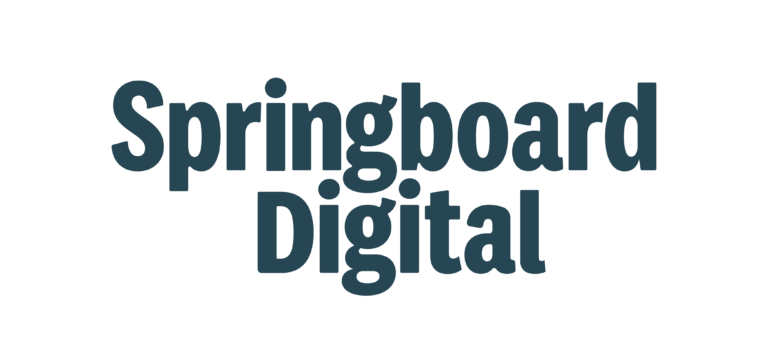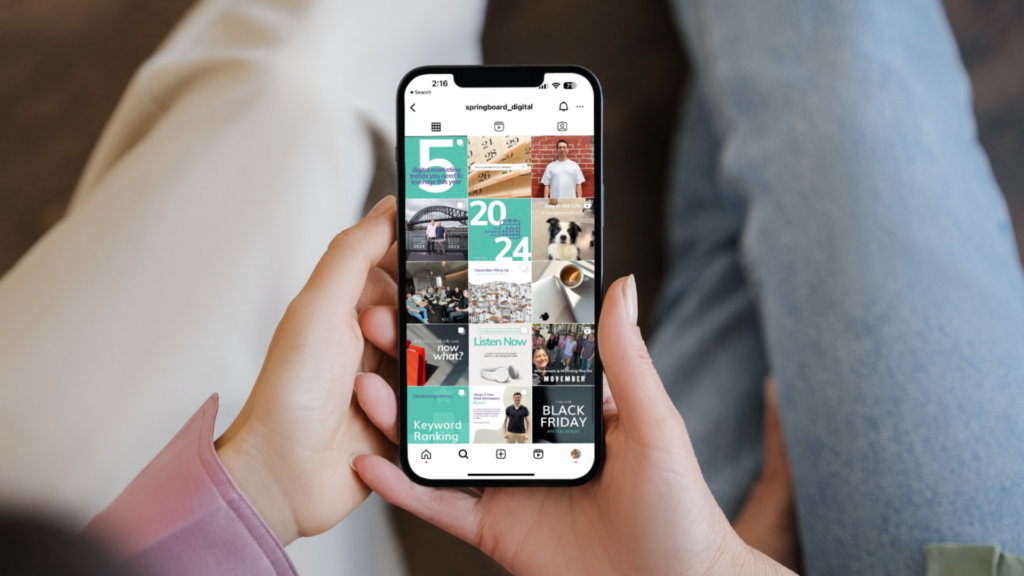In the world of digital marketing, Google Ads is one of the most popular and effective tools for driving traffic to your website and generating more conversions. However, simply getting people to click on your ads is not enough.
To truly maximize your ROI and get the most out of your advertising budget, you need to ensure your landing pages are optimised to convert more traffic into valuable leads or sales.
That’s where landing page optimisation comes in. By fine-tuning your landing pages to align with your Google Ads campaigns before your campaigns even go live, you can improve user experience, increase your average conversion rate, and ultimately boost your bottom line to hit your goals.
But what exactly is landing page optimisation, and how do you go about it?
In this blog post, we’ll explore landing page best practices, tips, and tricks to optimise your landing page for Google Ads. We’ll cover everything, from crafting keyword-rich headlines and content to designing compelling call-to-actions and mobile usability.
Whether you’re a seasoned marketer or just starting out, this post will give you the tools and knowledge you need to create the best landing pages around. Get ready to take your Google Ads campaigns to the next level.
So, let’s dive in!
Before You Start Optimising Your Landing Page
Set Your Objectives
Ads are a great traffic source for many reasons, including building brand awareness, driving new traffic to your website, converting visitors, leveraging past traffic data, and increasing revenue. By getting clear on what you want to achieve with your ads strategy, you can stay on track to convert leads and hit your goals.
Understand Your Marketing Funnel
Utilising your marketing funnel is essential to creating a successful landing page and marketing strategy. A marketing funnel represents the journey a customer takes from first learning about your business to making a purchase or taking another desired action.
The three main stages are awareness, consideration, and conversion.
Awareness involves introducing your brand to potential customers; consideration involves providing valuable information to build interest; and conversion involves convincing the customer to take action. Your Google Ads campaigns and landing page play a vital role in encouraging your target audience through your funnel.
Best Practices For Google Ads Landing Page Optimisation
Crafting a Compelling Headline
Landing pages fail when they don’t immediately hook your target audience. A successful landing page headline should be clear, concise, directly related to your value proposition, and include relevant keywords.
Using emotional language, asking a question, or highlighting your Unique Selling Proposition (USP) can also make it stand out and grab the reader’s interest, encouraging them to click through your website.
If you’re feeling witty, use a bit of humour!
Writing Keyword-Rich Content
Did you know your Google Ads quality score and visibility is improved if you have high-ranking organic content on Google organic search results? Including keyword-rich, relevant content on your landing page will increase the chance of your ads being clicked because in the eyes of the user, you’re more credible when you take up that precious Google real estate.
Working through your SEO strategy will also help you better understand the target keywords and phrases that your ideal customer is searching for, which you can use in your Ads to boost your quality score too.
Keep in mind that, although content is important, longer landing pages are not always better. Find a balance between providing enough relevant information for web traffic to convert, but also for a search engine to easily crawl and classify your website.
Ensuring Fast Page Load Times
Your landing page needs to load within the first 3.5 seconds to make a great first impression and keep potential customers hooked. Test your page load time using Google Page Speed Insights (one of our favourite landing page optimisation tools!).
Try implementing these 3 tips to instantly improve your landing page experience.
- Optimise images by compressing them without reducing their quality
- Minimise HTTP requests by reducing the number of files, scripts, and stylesheets
- Minimise code by eliminating unnecessary scripts and plugins
Fixing simple landing page elements, like your page load time, is an easy way to improve your conversion rate when users visit through an Ad.
Designing a Clear & Visually Appealing Layout
Because an ugly landing page is an instant turn-off! A clear and visually appealing landing page form should include several key elements to effectively communicate your message and encourage more potential customers to convert. They include:
- Branding: Consistent branding reinforces your brand identity and builds trust with your target market.
- White space: Sufficient white or negative space makes your page look clean and easy to read.
- Navigation: Limited navigation options keep web traffic focused on the offer and reduce distractions and bounce rate.
- Titles and icons: Using dot points that resonate with pain points generally exist for navigational purposes and icons will capture engagement. Use keywords in your headings to help Google’s search engine crawl and classify your landing page.
- Social proof: High converting landing pages include testimonials or other social proof. This reinforces the value and credibility of your service or product, therefore generating more lead form fills or sales.
- Images and graphics: More and more customers are expecting high-quality images and graphics relevant to your offer to trust what they’re purchasing. This optimises your landing page engagement factor ten-fold.
- Call-to-action: Increase your conversion rates with a clear and prominent call-to-action button (CTA) that encourages website visitors to do just that – take action. Read on for more on CTAs.
Including a Prominent & Effective Call-To-Action
What do you actually want people to do when they click on your landing page? To make your Call-To-Action (CTA) stand out and encourage those clicks, start by making it visually prominent with a contrasting color or larger font.
Use clear and concise language that emphasizes the benefit to the user, such as “Book Your Free 15 Minute Consultation,” and place the button above the fold to increase visibility. ‘Above the fold’ refers to the top part of your web page that’s visible without having to scroll down.
Additionally, ensure your CTA is relevant to the Google Ads campaign the landing page is associated with and the user’s stage in the funnel. Your value proposition should be immediately obvious to your potential customer! You can even consider using urgency or scarcity tactics to encourage immediate action and boost your conversion rates.
Optimising for Mobile Devices
Over 50% of Google’s website traffic comes from mobile, so optimising your landing page for it is crucial. Search engines rank landing pages that are optimised for mobile devices higher in organic search results.
This means your page is ‘mobile responsive’, with a clear and simple layout, easy-to-read fonts, and appropriately sized images. Use larger, finger-friendly buttons and forms, and minimize scrolling and zooming.
Finally, test your landing page experience on different mobile devices and make any necessary adjustments to ensure it is user-friendly and has a fast page load time on all screen sizes before launching your Google Ads campaigns.
Track Your Data
Have you actually achieved your landing page conversion rate goal? How do you know legitimate business happened, if you can’t ‘track’ form fields or purchases properly?
To track useful data for Google Ads on your landing page, start by setting up conversion tracking in your Google Ads account. This will allow you to track specific actions, such as form submissions and purchases, and attribute them to your ad campaigns. Additionally, integrate Google Analytics with your landing page to gain deeper insights into user behavior, such as bounce rates and session duration.
If you’re a service-based businesses it’s also a great idea to invest in Customer-Relationship-Management software (CRM) so you can capture leads as they come through your landing page form fields, especially phone calls. Capture leads, where they came from, and if they qualify. This will help you decipher whether the conversions and traffic you’re having come through your landing page are high quality, and may help you convert more leads into successful clients.
Use the data you collect to optimise your campaigns and improve your landing page conversion over time.
Landing Page Optimisation Tips & Tricks
Understanding & Targeting the Right Audience
For your landing page to resonate with people, it must be targeting the most relevant audience in the first place. Analyse your existing cutomer data in Google Analytics to look for patterns and identify common characteristics, behaviours, pain points, and goals. Use these insights to refine your Google Ads targeting and tailor your landing page copy to resonate.
Using A/B Split Testing to Refine Page Elements
By conducting an A/B split test on specific elements of your landing page, you can figure out what resonates with your audience best and run with that.
Start by identifying specific landing page elements to test, such as headlines or CTAs. Create a few versions of your landing page and only change that one important element on each, and keep your Ad the same while linking to each variation of the landing page. By keeping other elements on the page the same your test will remain controlled, and you’ll easily be able to tell which landing page variation is most effective at converting people who clicked on the ad.
Use these insights to make data-driven decisions and continuously refine your landing pages over time.
Incorporating Trust Factors
Incorporating trust factors in your landing page helps build your credibility and encourage people to convert. After all, over 90% of people consider customer reviews as trustworthy as a personal recommendation.
Use social proof, such as customer testimonials or reviews, to show other users have had a positive experience with your product or service. If possible, also display any relevant certifications, awards or partnerships your business has to demonstrate your expertise and authority from an industry perspective.
Last but not least, use secure payment options and prominently display those privacy or security measures to reassure site visitors that their purchase is out of harm’s way.
Minimising distractions
Landing page design is so important, and one of the most common landing page fails is cramming too much in. Distracting layout, text, links, and images on your landing page will detract from its main purpose – to encourage people to purchase your product or service.
To minimize distractions on your landing page, start by removing any unnecessary links or navigation menus that could lead website visitors away from your intended conversion goal.
Use a simple and consistent design with clear and concise messaging that emphasizes the benefits to the user. Avoid using too many images or animations that could distract from the main message, and ensure that any forms or CTAs are prominently displayed. This is especially important for increasing conversion rates for website visitors using a mobile device.
Offering Value
What value can you provide your customers on your landing page to help increase your conversion rate?
For example, a lead generation dental business could offer a free ebook or 15 minute consultation or using a simple contact form. A good landing page for an eCommerce skincare store could offer a few gift with purchase, a discounted sample pack, or free shipping. Incorporating value will help increase conversions through your Google Ads’ landing pages.
Start Running Google Ads
Congratulations! If you’ve followed these landing page best practices, your landing page is now optimised to increase your conversion rate by converting those clicks into sales. If you’ve got the best landing page around and are ready to start running Google Ads, we’re here to help.
At Springboard Digital, we’re passionate about offering strategic and personalised Google Ads campaigns at a high-value price with all the benefits of agency support. Not to toot our own horn, but we’re pretty good at what we do!
Reach out to our friendly team of Digital Marketing experts to learn more about how we can work together, and jump onto our Instagram for more digital tips like this. We look forward to hearing from you!






